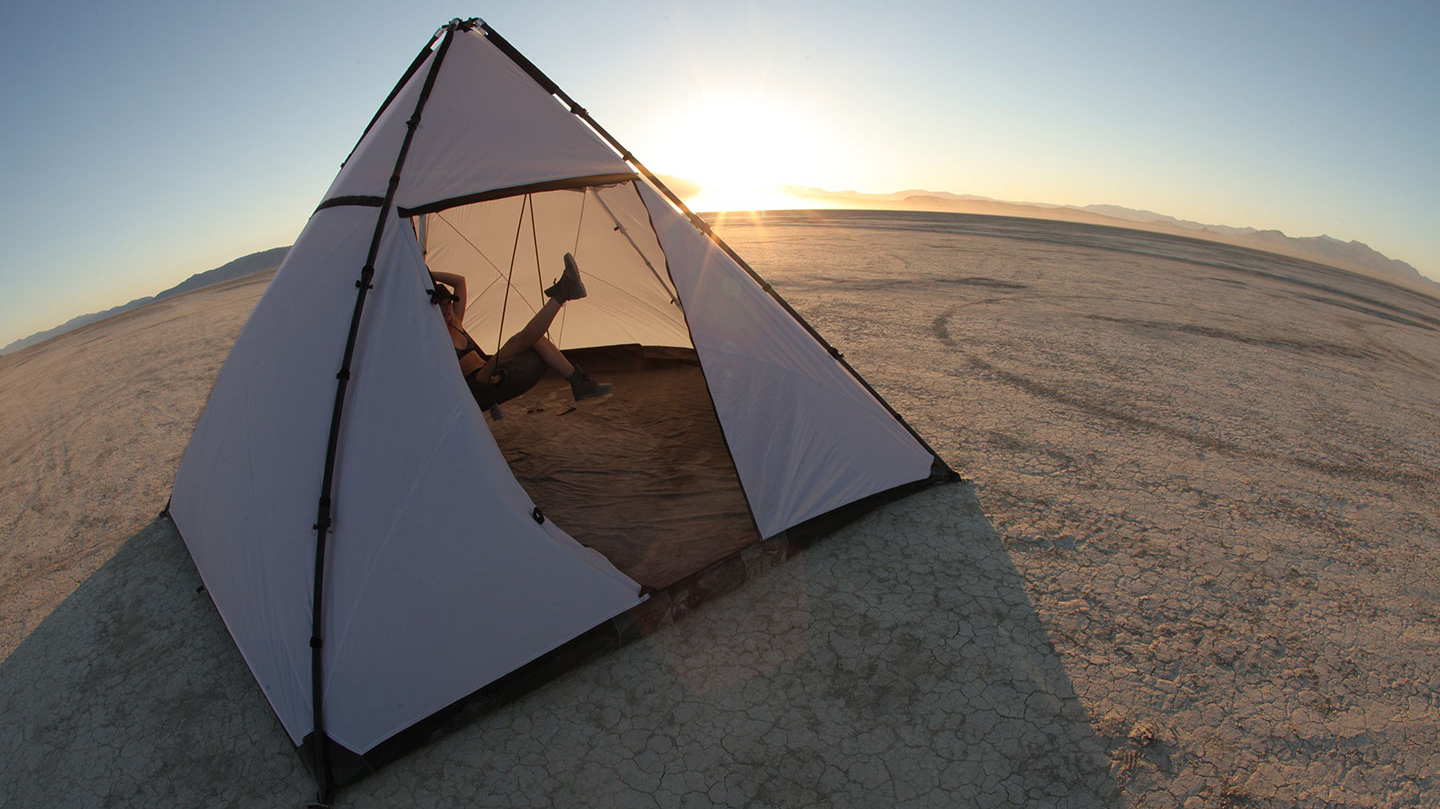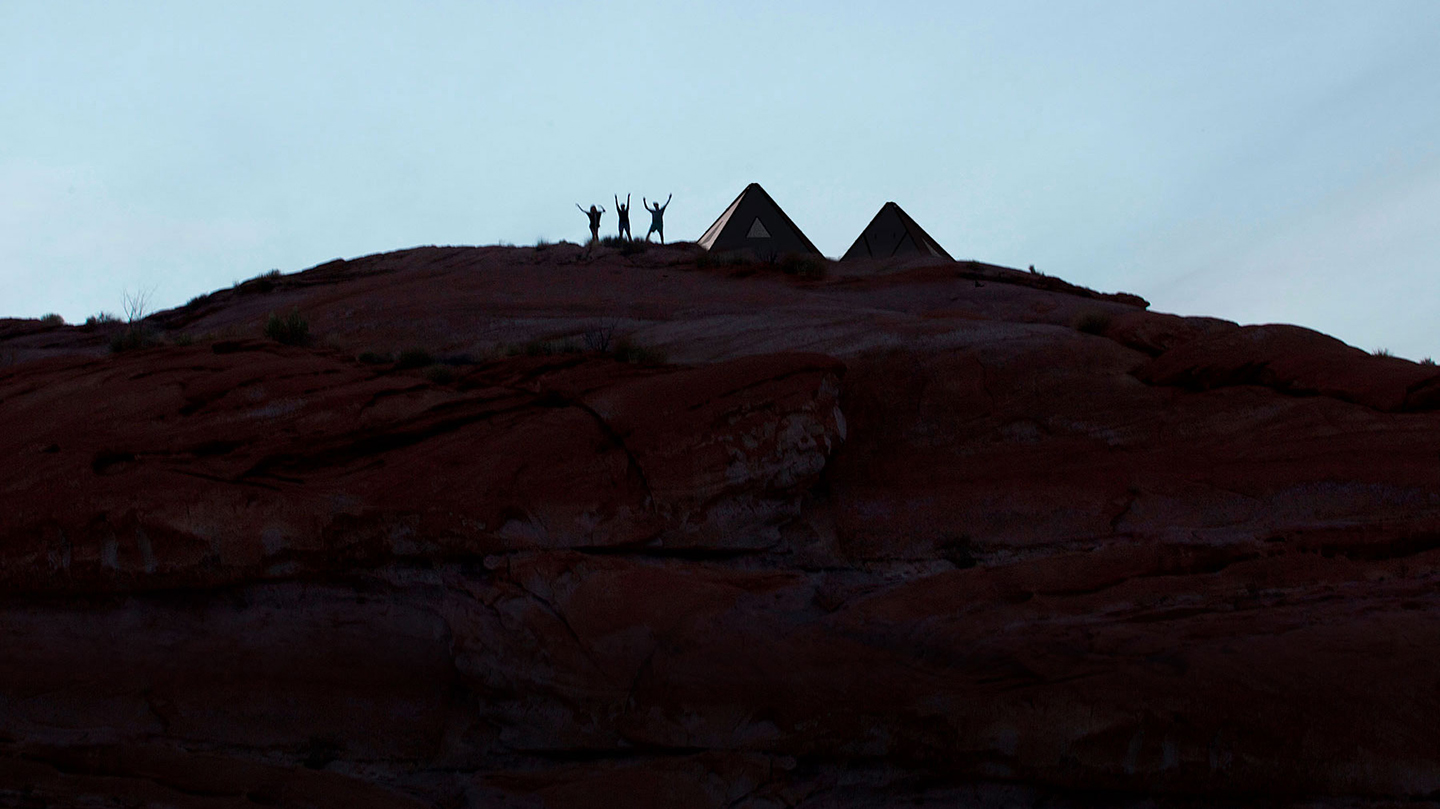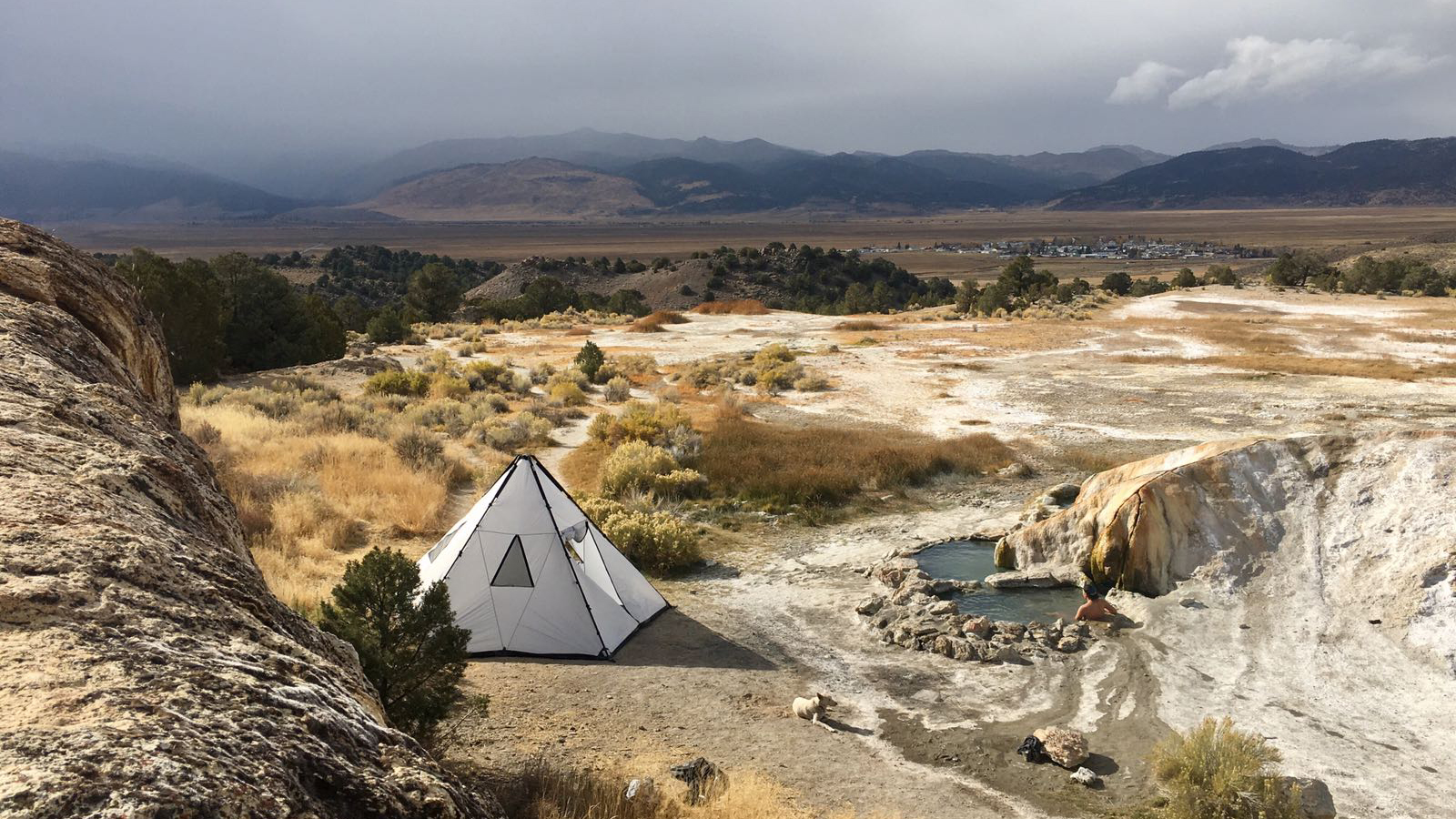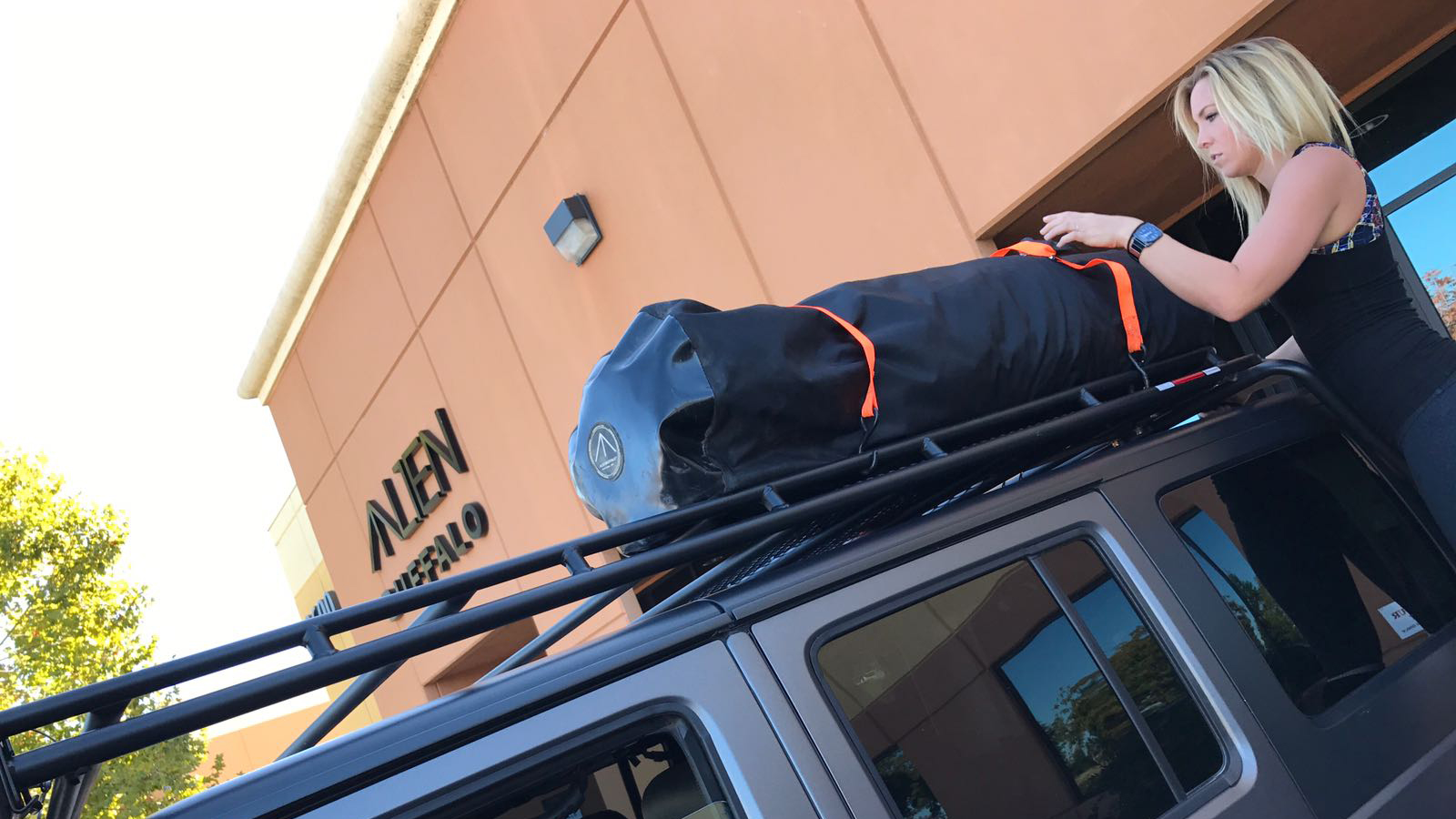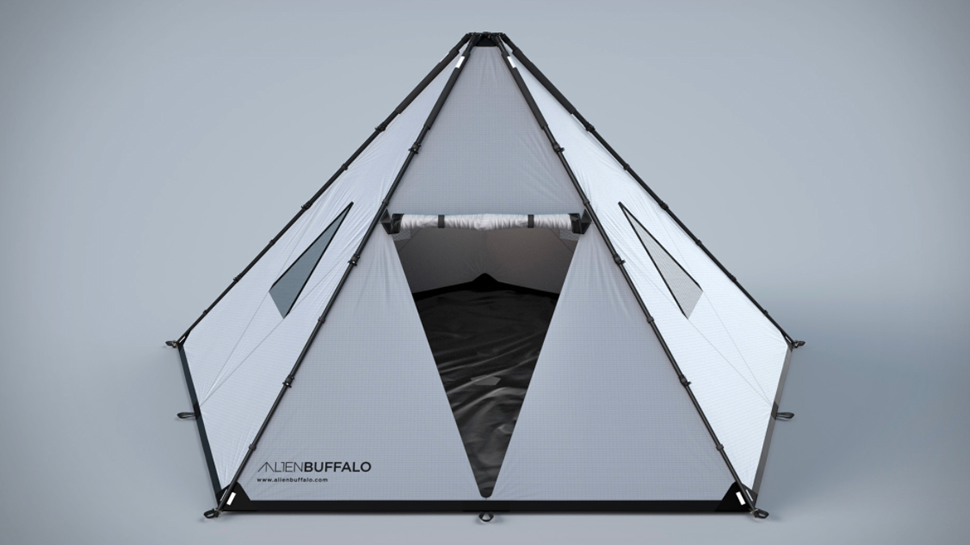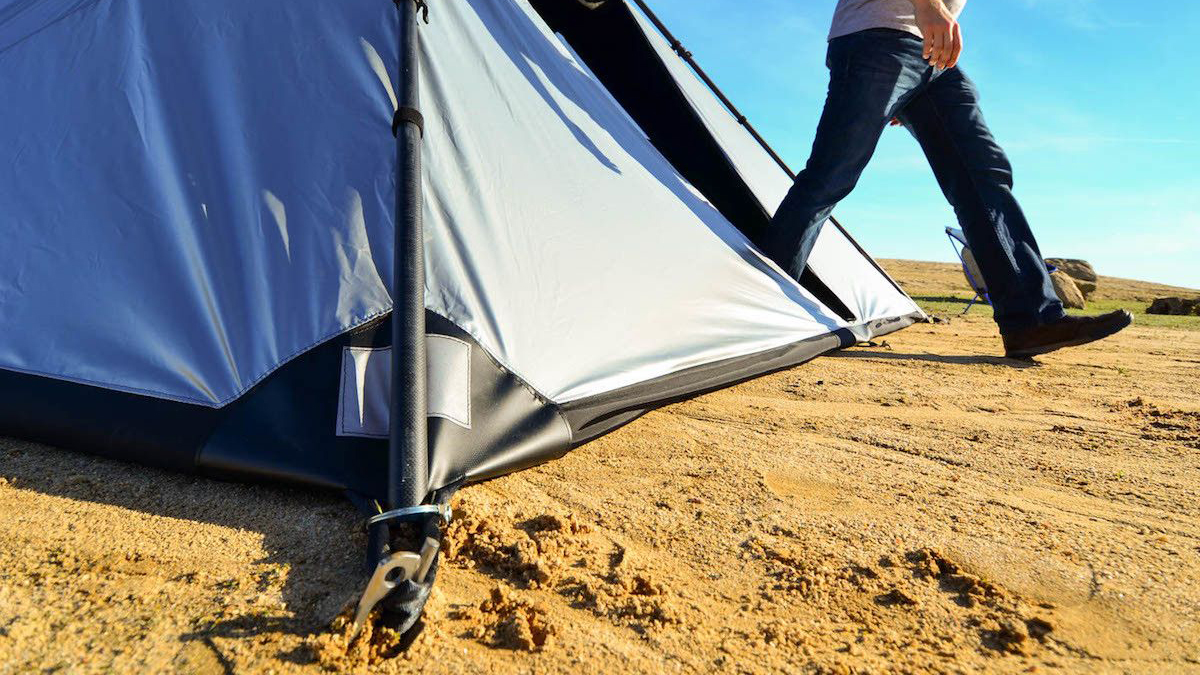Man isn’t meant to stay indoors — our weekly “Trekking” column can attest to that. It’s a column dedicated to the adventurer inside of all of us, the one pining to ditch the office humdrum for a quick surf session or seven-week jaunt in the Grand Tetons. One day we may highlight an ultra-light stove and the next a set of handmade canoe paddles.
When we want ample living space on the road, most of us envision an RV or a towable camper. Both afford us a healthy amount of space when we’re away from home, or at least more space than your stereotypical camping tent can provide. The Buffalo Tent ($1,500) isn’t your everyday shelter, however, thanks to a first-rate combination of durability, functionality, and understated style.
When it comes to Alien Buffalo, space is the name of the game. The Buffalo Tent supposedly provides the largest footprint for its weight on the market, and can accommodate a whopping 14 people at once (or four full-size air mattresses). The tipi-like structure, which has been a staple of nomadic tribes for thousands of years, is also more than 9-feet tall and weighs a mere 44 pounds. And because the fabric is already attached directly to the tent’s frame, it only takes a minute or two to erect the entire structure. The tent even fits into a bag that’s barely larger than the one you use to store your clubs, rendering it an ultra-portable solution that as suitable for checking as your trunk.
Founders — and Burning Man enthusiasts — Barrett Lyon and Layne Clemen set out to create structure that would shelter campers from the harsh winds and sand that make up the Nevada’s Black Rock Desert. As such, the California-based manufacturer places durability at the forefront. The tent opts for military-grade ripstop nylon and premium threading, including a unique thread that automatically seals the Buffalo Tent’s seams at the onset of rain. An optional reflective cover also helps you beat the heat, while four windows lining the tent’s sides help with ventilation.
Other features are more subtle. When you reinforce the structure with the provided pins, for instance, the frame can support a solid 250 pounds, allowing you to hang lamps, luggage, and anything else you may want to suspend from the ceiling. The Buffalo Tent also forgoes traditional guy wires, meaning you’re less likely to trip when stumbling around in the night. Now, couple those hallmarks with the abrasion-and-puncture-resistant floor and the tent’s telescoping, carbon-composite legs and you have a piece of gear that’s made for the long haul. Friends not included.
